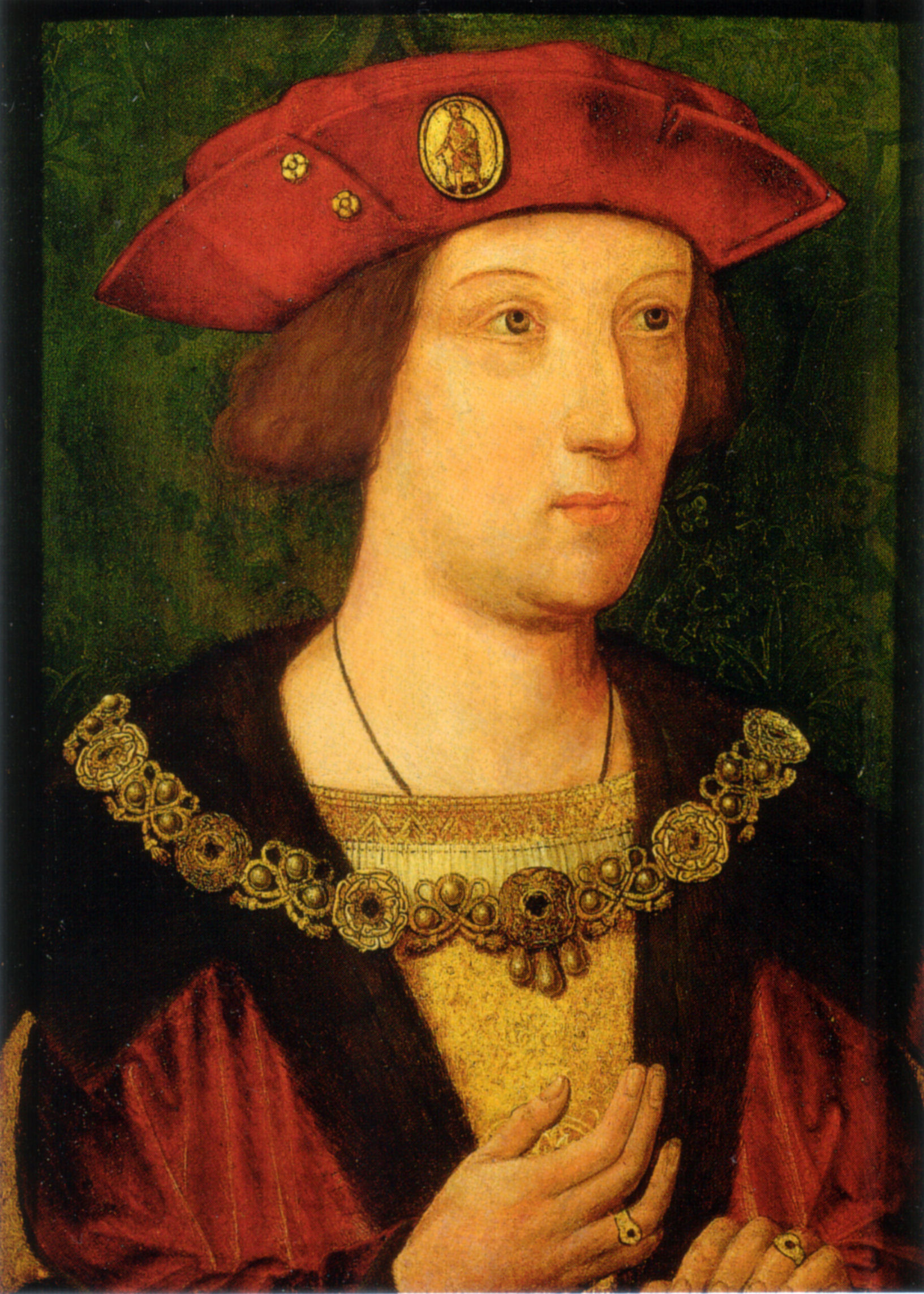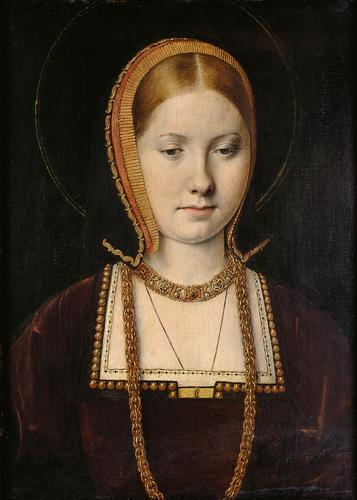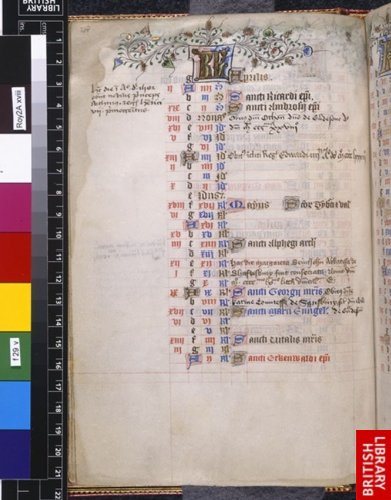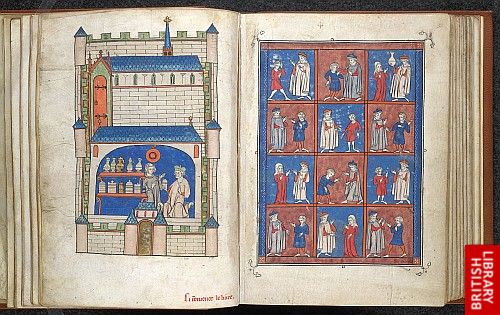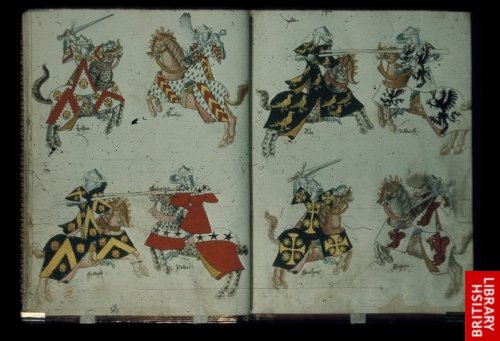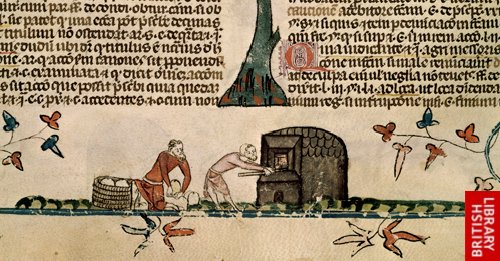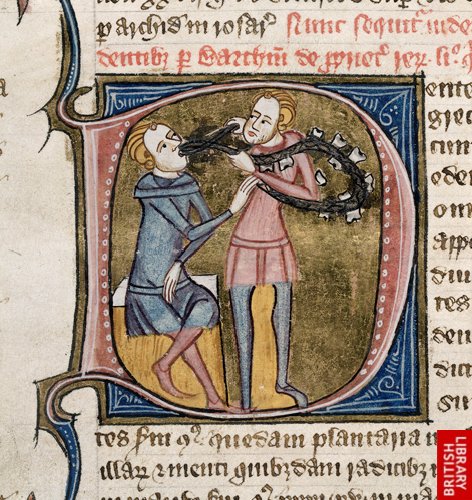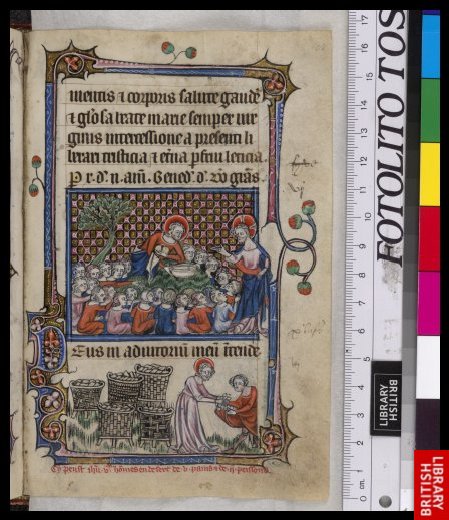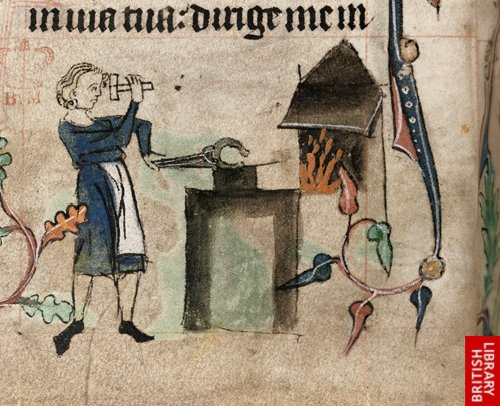Saint Nicholas Eve
Tonight (5th December) and tomorrow (6th December) are times of much celebration for the excited children (and parents!) of many countries within continental Europe. For Saint Nicholas is due to make his arrival and give presents to the children of Europe. Parts of France, Italy, Germany, Belgium, the Netherlands, and Poland all celebrate, in different ways, this saint – known as the protector of children. However, in England, as a consequence of Henry VIII’s break with Rome and the English Protestant Reformation of the sixteenth century, it is no-longer the modern-day English custom to celebrate Saint Nicholas. But in the pre-Reformation medieval/early Tudor period, the feast of Saint Nicholas was celebrated in many towns and villages of England (including the North Essex town of Great Dunmow) as part of the Catholic festivities of Yuletide and Christmas.
The stories and legends of St Nicholas made their way into the exquisite and breath-taking illuminated manuscripts of the medieval England. One such legend is the tale of three children who had wandered away from their homes and got lost. A wicked butcher lured the children, by now cold and hungry, into his shop where he attacked and murdered them, then pickled them in a large tub. Fortunately Saint Nicholas saved them and brought them back to life – thus forever taking his place in legends as the protector of children.
For your delight, below is a selection of images of Saint Nicholas, the saviour of pickled children and storm-lashed boats, from the British Library’s Illuminated Manuscripts collection.
 Consecration of Nicholas as a bishop of Myra from The Queen Mary Psalter (England (London/Westminster or East Anglia), between 1310 and 1320), shelfmark Royal 2 B VII f.317, © British Library Board.
Consecration of Nicholas as a bishop of Myra from The Queen Mary Psalter (England (London/Westminster or East Anglia), between 1310 and 1320), shelfmark Royal 2 B VII f.317, © British Library Board.
 Nicholas stilling a storm and saving a boat from The Queen Mary Psalter (England (London/Westminster or East Anglia), between 1310 and 1320), shelfmark Royal 2 B VII f.318, © British Library Board.
Nicholas stilling a storm and saving a boat from The Queen Mary Psalter (England (London/Westminster or East Anglia), between 1310 and 1320), shelfmark Royal 2 B VII f.318, © British Library Board.
 Nicholas as a bishop addressing three children in a tub from The Queen Mary Psalter (England (London/Westminster or East Anglia), between 1310 and 1320), shelfmark Royal 2 B VII f.317v, © British Library Board.
Nicholas as a bishop addressing three children in a tub from The Queen Mary Psalter (England (London/Westminster or East Anglia), between 1310 and 1320), shelfmark Royal 2 B VII f.317v, © British Library Board.
 Bishop saint Nicholas of Bari resurrecting three murdered children from a pickling vat, at the beginning of the reading for 6 December from The Stowe Breviary (Norwich, England, between 1322 and 1325), shelfmark Stowe 12 f.225, © British Library Board.
Bishop saint Nicholas of Bari resurrecting three murdered children from a pickling vat, at the beginning of the reading for 6 December from The Stowe Breviary (Norwich, England, between 1322 and 1325), shelfmark Stowe 12 f.225, © British Library Board.
Of course, over the centuries the tale of Saint Nicholas has morphed from a saintly bishop in clerical vestments, into the Father Christmas/Santa Claus we know today. And, thanks to a well-known gigantic soft-drinks company, is now a little fat fella with white hair and full beard, resplendent in his red clothes trimmed with white fur.
 Nicholas of Bari (or Myra) enthroned and dressed as a bishop, holding a crozier and three golden balls, his hand raised in benediction (Italy, N. (?Lombardy), 2nd half of the 15th century), shelfmark Additional 61734, © British Library Board.
Nicholas of Bari (or Myra) enthroned and dressed as a bishop, holding a crozier and three golden balls, his hand raised in benediction (Italy, N. (?Lombardy), 2nd half of the 15th century), shelfmark Additional 61734, © British Library Board.
 Nicholas of Bari (Italy, N. (?Lombardy), 1st decade of the 16th century), shelfmark Additional 39636 f.49, © British Library Board.
Nicholas of Bari (Italy, N. (?Lombardy), 1st decade of the 16th century), shelfmark Additional 39636 f.49, © British Library Board.
 Coca-Cola® Santa December 1940. Artist Haddon Sundblom had first created this very familiar image of Santa in the 1930s. Above is “Somebody Knew I Was Coming” and the basis for advertising material during Christmas 1940. Looking at this image and the ones above, it occurred to me that six hundred years after the beautiful illuminated manuscripts of the middle ages, Santa’s right hand is still raised in a form of benediction.
Coca-Cola® Santa December 1940. Artist Haddon Sundblom had first created this very familiar image of Santa in the 1930s. Above is “Somebody Knew I Was Coming” and the basis for advertising material during Christmas 1940. Looking at this image and the ones above, it occurred to me that six hundred years after the beautiful illuminated manuscripts of the middle ages, Santa’s right hand is still raised in a form of benediction.
A future post, to be published over this Christmas, will retell the
story of Great Dunmow’s 1530s festivities of Saint Nicholas.
Note on the British Library’s copyright
Nearly a year ago, I first started to use on my blog digital images from the British Library’s catalogue of Illuminated Manuscripts. As all the images were in copyright, I (quite rightly) had to request permission to use these images. This permission the British Library very willingly and quickly granted me, as my blog is a non-profit hobby blog. However, just recently the British Library has marked all their images from their catalogue of illuminated manuscripts as being Public Domain Images and therefore free of all copyright restrictions. This is fantastic news for both professional and amateur historians alike. I have gained much pleasure from sharing my ‘finds’ from their catalogue with you. The decision to remove their copyright will hopefully encourage more people to use some of the most exquisite images in existence, thereby giving us modern sophisticated(?) digital-age folk a fleeting glimpse into the medieval world.
You may also be interested in the following posts
– Christmas in a Tudor town
– Medieval Christmas Stories
